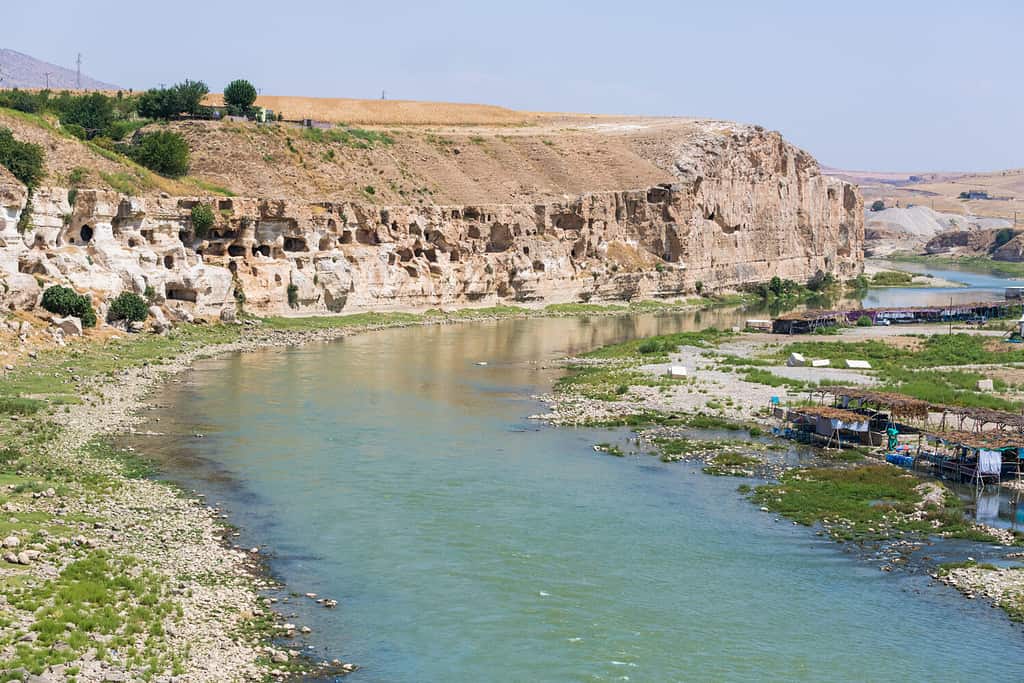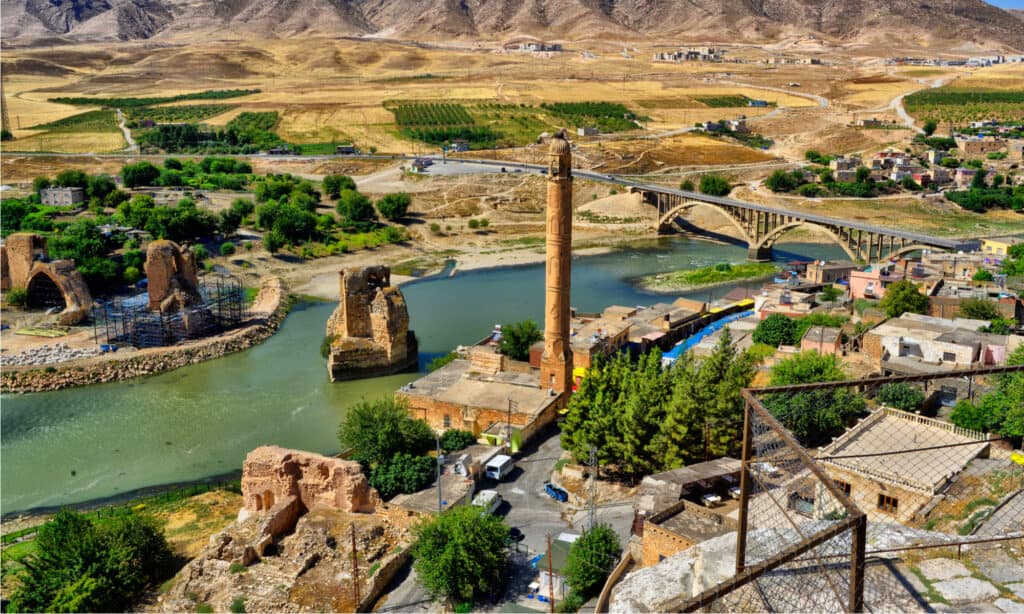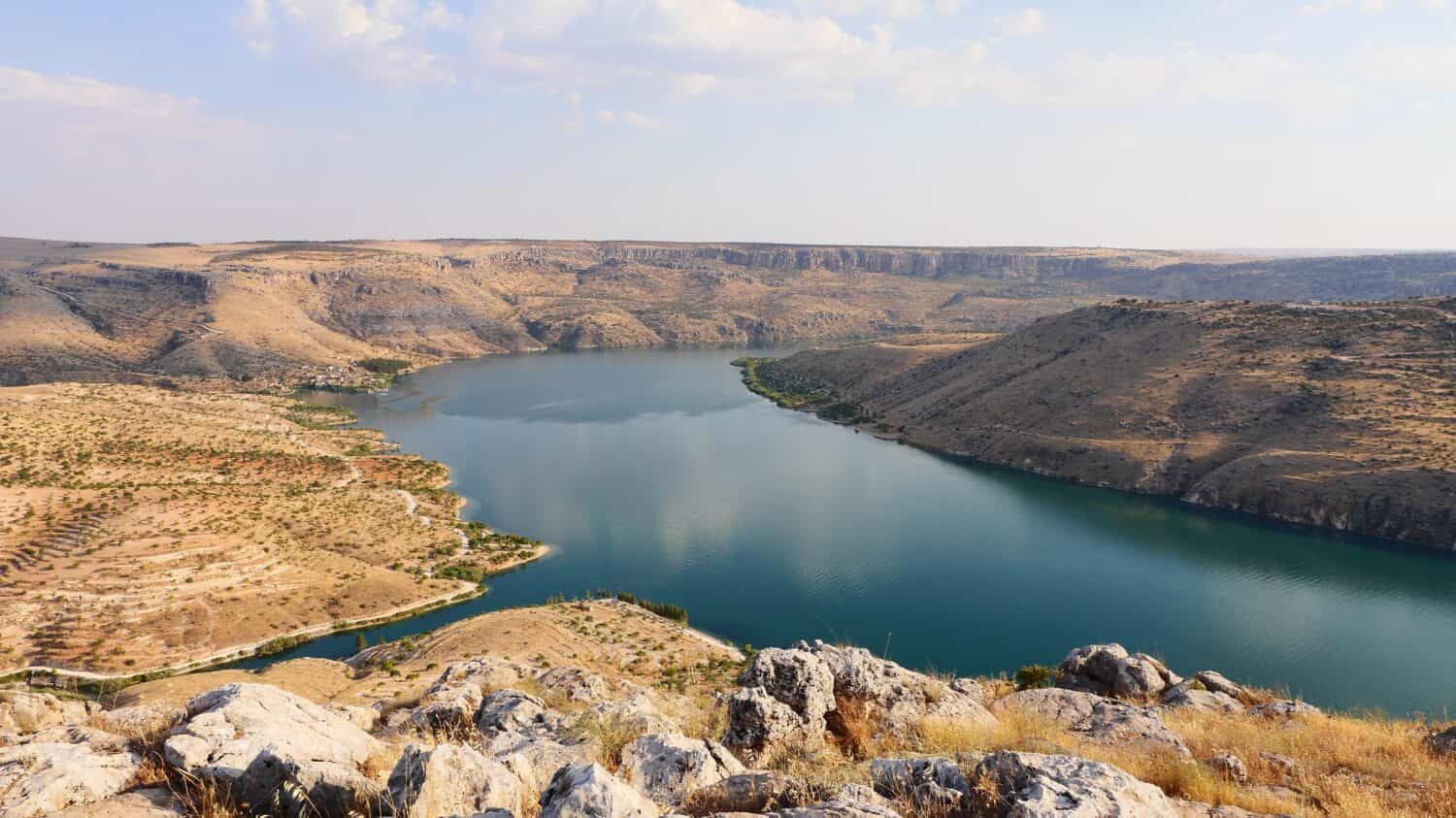The Tigris River is one of the world’s most important rivers and one of the “two great rivers” that flow through the region known as Mesopotamia. It begins in the highlands of Armenia, along the way flowing through deserts, fertile lands, and past the ruins of ancient civilization. Eventually, it meets with its sister river, the Euphrates, and empties into the Persian Gulf. Today, we are going to look at the Tigris, specifically, how deep it is and some of the other important characteristics of it. Let’s get started.
How Deep is the Tigris River?

There are caves and rock formations that surround the Tigris River, many of which are home to endemic species of fish.
©Inna Giliarova/Shutterstock.com
The Tigris River changes depth along its length, but on average, the center of the river is between 1 and 10 feet, with most of the river being closer to 1-5 feet in depth.
The depth of the Tigris River varies along its course, mostly depending on the lay of the land (topography) and human intervention through things like dams. Additionally, weather patterns contribute to how much water is flowing into the river, with more rain causing the river to swell in some instances.
All that being said, there is some relative stability to the river. Satellite imagery shows that most of the river is less than five feet deep, especially in the upstream and middle sections. Some portions of the river can be as deep as 15 feet, but these are rare and usually occur at the end of certain bends where erosion is more intense. The Tigris River is generally shallow compared to other major rivers in the world.
The Course and Geography of the Tigris River

There have been human civilizations along the Tigris River since the dawn of the first civilizations. Sumer, often referred to as the first-ever civilization, existed where the Tigris and Euphrates converged.
©Sanatkar/Shutterstock.com
The Tigris River is one of the longest rivers in the world and stretches 1,900 km (1,200 miles) through Mesopotamia. It starts in the Taurus Mountains of eastern Turkey and flows southward through the Syrian and Arabian Desert. Along its path, the river flows through or near several important cities, many of which are ancient and historical places. Some of the most recognizable places include Nineveh, Baghdad, and Basra.
The river forms part of the border between Turkey and Syria, and, later on, between Iraq and Iran. Further down its course, it ends up joining the Euphrates River (another extremely important river in the region) near al-Qurnah to form the Shatt al-Arab. After joining, the rivers empty into the Persian Gulf, with a discharge of 85,400 cu ft/s.
The Tigris River is often mentioned together with the Euphrates River, as they are the two main rivers that define the region of Mesopotamia. In fact, the word “Mesopotamia” literally translates from Greek into “the land between the rivers.”
The History and Importance of the Tigris River
The Tigris River is one of those rivers that has a storied history that is intimately linked with humans in a way that’s hard to overstate. It is one of the two great rivers that define Mesopotamia, the other being the Euphrates. Mesopotamia is often considered to be one of the major cradles of human civilization, and the Tigris helped to allow that culture to develop. Today and in ancient times, the two rivers provided water for irrigation, transportation, and trade and were regularly featured in creation myths, end-times revelations, and religious texts of all sorts. Some of the more famous examples where this happens is the Bible and the Epic of Gilgamesh.
Throughout history, the Tigris River served as one of the major “arteries” for various dominant empires reaching back to the times of the Assyrians, Babylonians, and Persians. Today, the Tigris River is still an important source of water and energy for millions of people across Turkey, Syria, Iraq, and Iran.
The Ecology of the Tigris River

There are specialized fish and other animals that only live in the Tigris-Euphrates water system.
©GezGezok/Shutterstock.com
The Tigris River has a lot of important native animals, many of which are exclusively found in this area of the world. The river and its tributaries are specifically known for a free endemic fish species:
- The leopard barbel is a spotted fish that is nearing extinction due to habitat loss and overfishing.
- The mangar is a large predatory fish that can weigh more than 220 pounds.
- The Iraq blind barb is a cavefish that has adapted to the dark and low-oxygen environment near Haditha on the Euphrates.
Incredibly, it’s estimated that up to one-third of the fish species that live in the upper portions of the river are also endemic, with more species (technically subspecies within these groups) like the Aphanius, Glyptothorax, Cobitis, Orthrias, and Schistura being found in these waters.
Besides fish, there are other important species that live in the region, including the Basra reed warbler, the smooth-coated otter, and the Euphrates soft-shell turtle, many of which are located in the marshes where the two rivers converge.
The photo featured at the top of this post is © Nina Assam/ via Getty Images
Thank you for reading! Have some feedback for us? Contact the AZ Animals editorial team.






